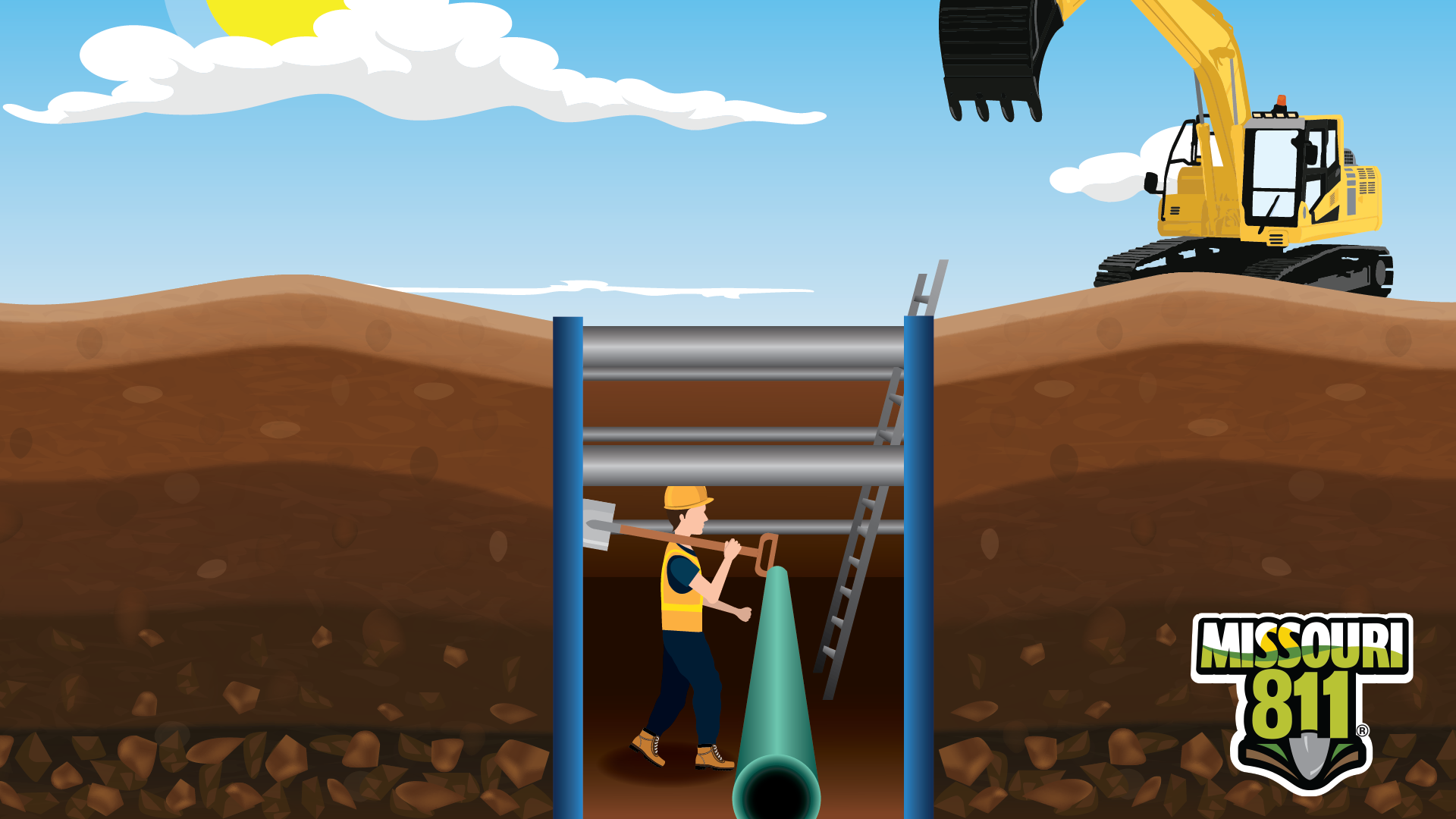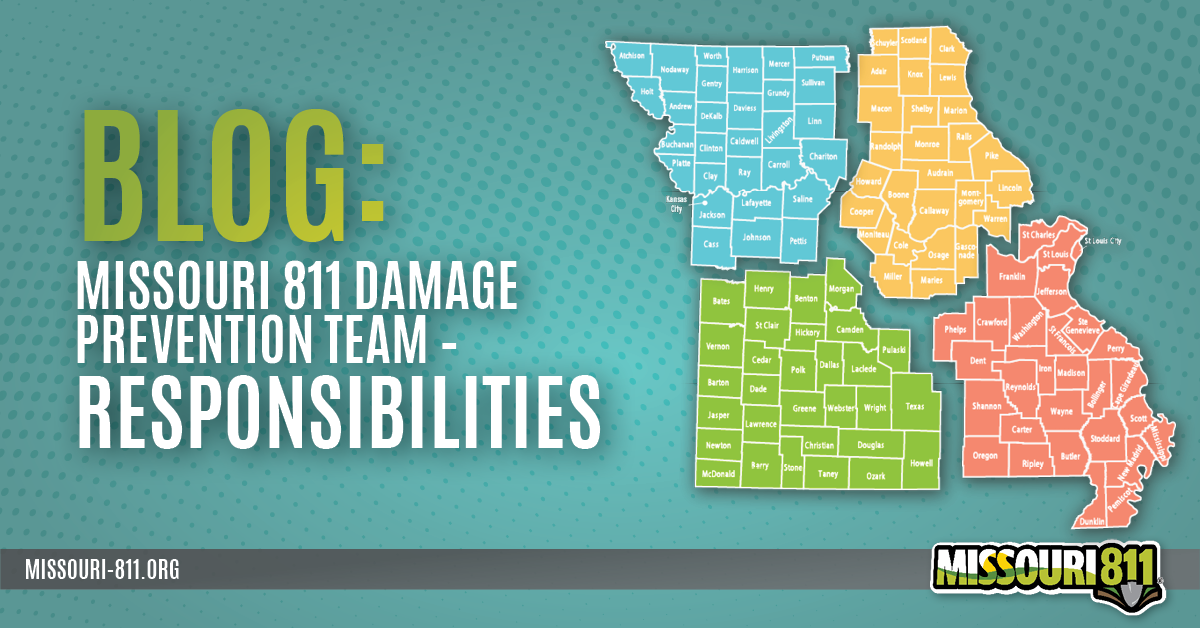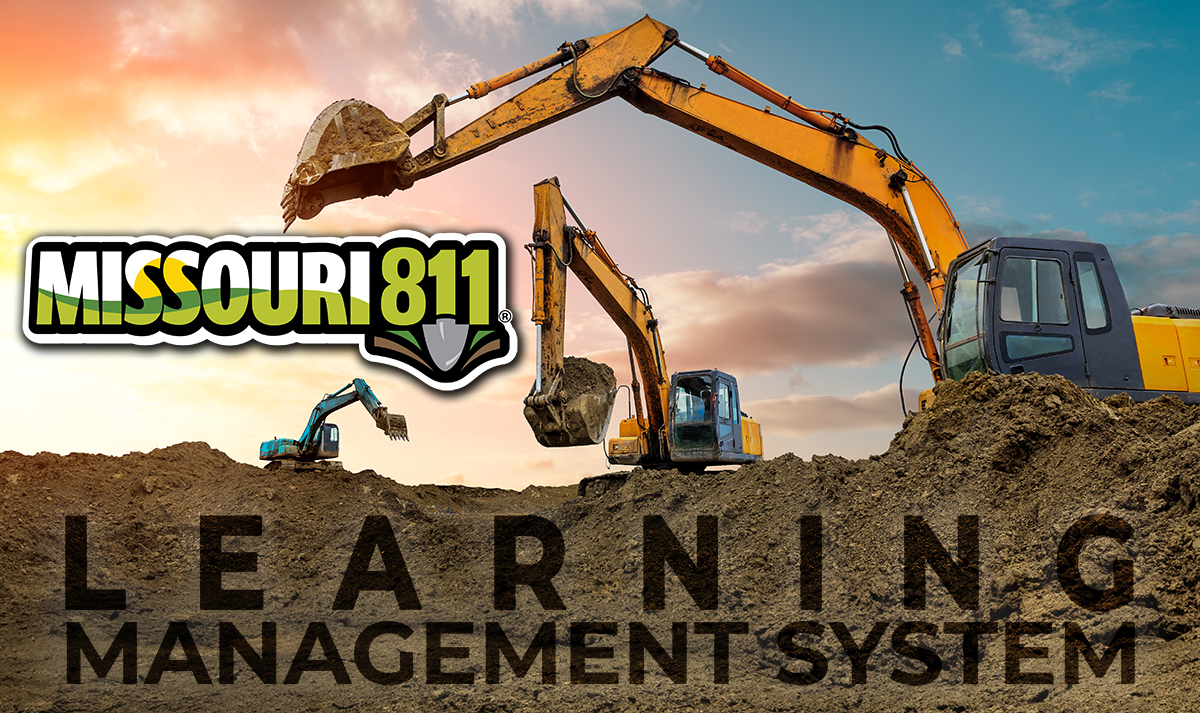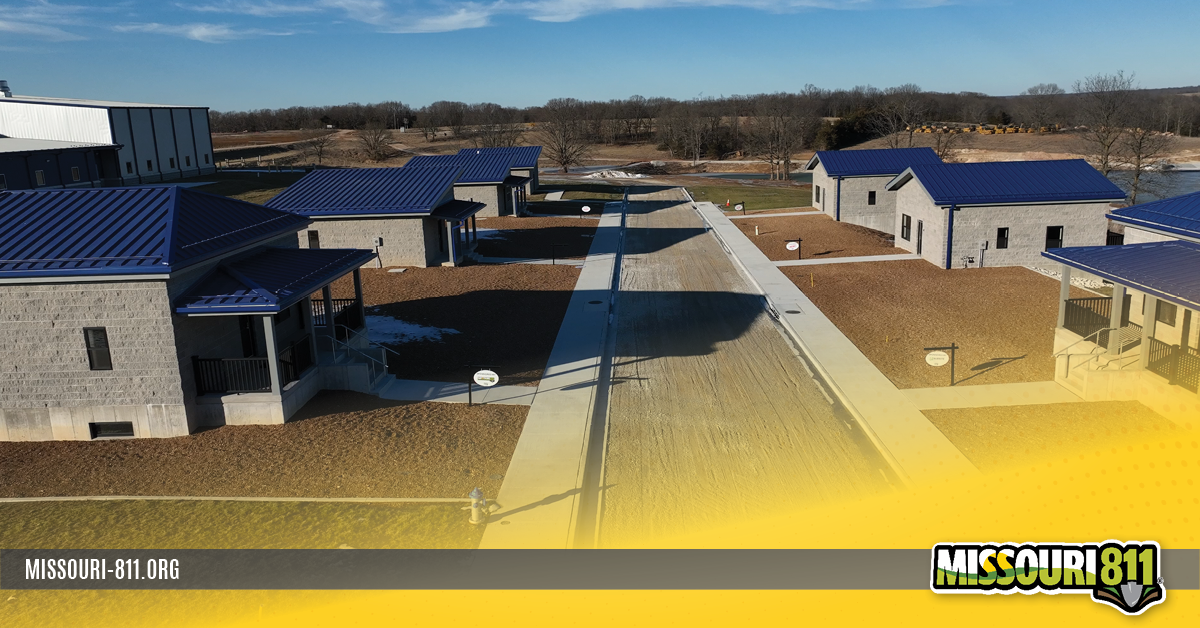At Missouri 811, safety is our top priority. There are many hazards associated with excavations and trenches. Here we will provide essential information on how to protect workers and prevent accidents.

We are an organization dedicated to promoting safe digging practices and preventing damage to underground utilities. Trench safety plays a critical part in the construction and utility industries. Trenches and excavation are associated with many hazards. The more awareness we can spread about the importance of safe digging, both inside and outside trenches, the safer Missouri will be.
Safety Before Excavating
Before any excavation work begins, it’s imperative to evaluate the dig site and plan for safety. This process involves assessing soil conditions, ensuring appropriate protective systems are safely in place, testing for any hazardous gasses in the trench, providing safe access and egress points, contacting utilities, and assessing what safety equipment is necessary.
What are the risks associated with trenches?
The greatest risk to workers in trenches is cave-ins. Most accidents happen in trenches that are 5-15 feet deep. Typically, there are no warning signs of a cave-in, before it’s too late. There are other hazards associated with trenches as well. These can include asphyxiation due to lack of oxygen, inhalation of toxic gases, fire, and the accidental striking of underground utility lines. In order to protect workers, it’s vital that adequate protection systems are used, and that they can resist all expected loads.
In addition, other hazards in trenches include:
- Water accumulation
- Falls
- Mobile equipment.
To minimize these risks:
- Test the atmosphere for hazardous gases before workers enter the trench.
- Provide safe means of access and egress every 25 feet in trenches 4 feet deep or more.
- Install barricades and grade the soil away from the trench to protect workers and equipment.
- Fence or barricade trenches left unattended overnight.
Protecting Your Team
There are three main types of protective systems that can be used in excavations and trenches:
- Shoring: A system that uses wales, cross braces, and uprights to provide a framework for supporting the walls of the excavation.
- Shielding: A structure, such as a trench box or trench shield, that can withstand a cave-in and protect workers.
- Sloping: A technique that involves forming the sides of the excavation at a specific angle of incline, which varies based on soil type and other factors.
Employers must select and construct appropriate protective systems based on factors that include soil classification, water content, depth of the trench, nearby operations, and weather conditions.
Any excavation involving trenches must have a competent person who ensures trench safety. This person must have specific training and must be well-versed in soil classification, protective systems, and OSHA standards. The competent person plays a crucial role in identifying hazards and is authorized to eliminate them immediately. The person in this role is responsible for conducting daily inspections of the excavation, the surrounding area, and the protective systems before any work begins, after any event that could pose a future hazard (such as a sudden change in weather), and any time workers are exposed to potential hazards.
Missouri 811 values all workers and believes that each worker has the right to a safe workplace. By understanding the hazards in and around trenches, following best practices, and using appropriate protective systems, we can prevent accidents and save lives. If you observe any evidence of a potentially unsafe working condition, advise the competent person and take necessary precautions.





